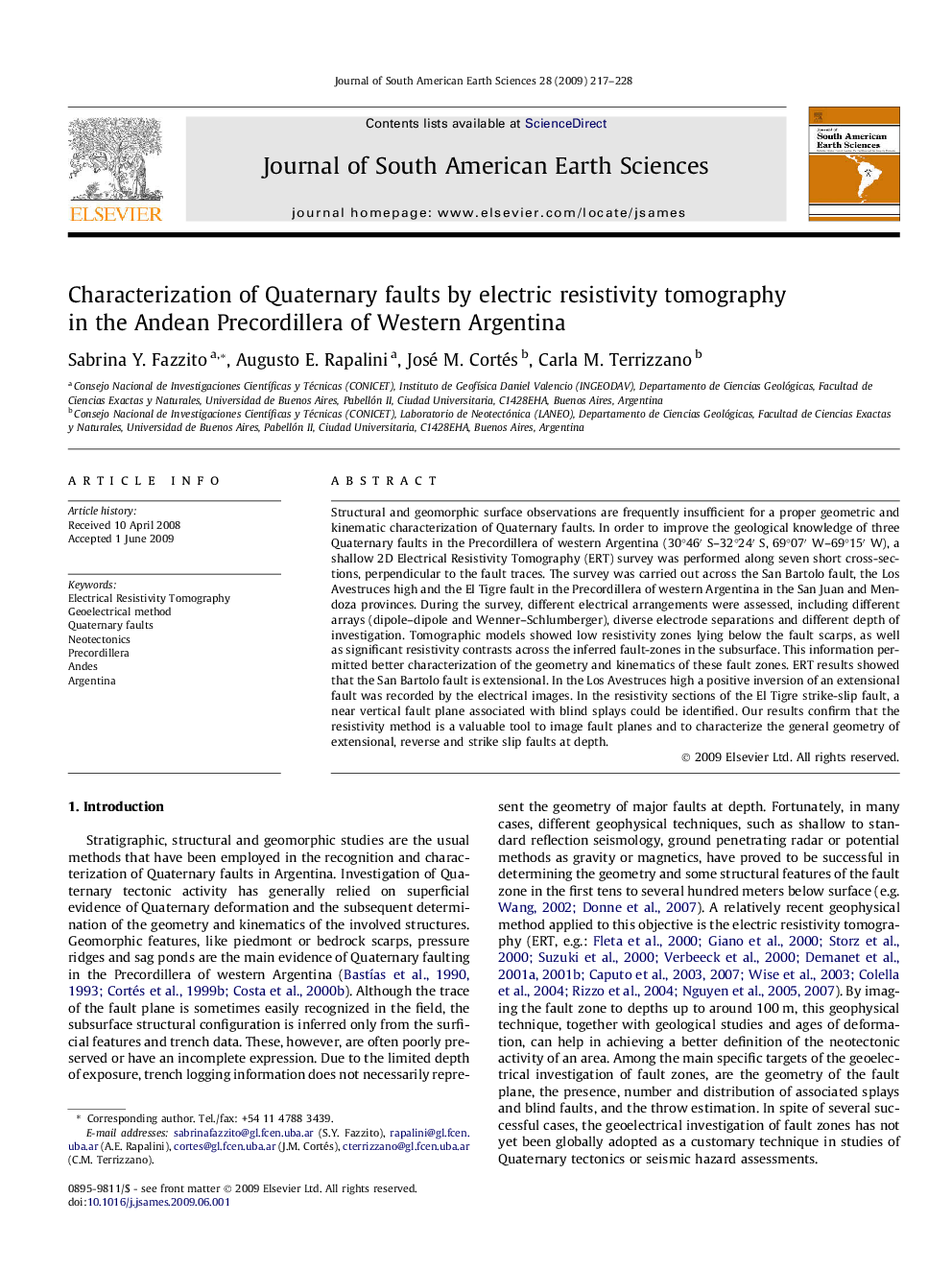| Article ID | Journal | Published Year | Pages | File Type |
|---|---|---|---|---|
| 4682847 | Journal of South American Earth Sciences | 2009 | 12 Pages |
Structural and geomorphic surface observations are frequently insufficient for a proper geometric and kinematic characterization of Quaternary faults. In order to improve the geological knowledge of three Quaternary faults in the Precordillera of western Argentina (30°46′ S–32°24′ S, 69°07′ W–69°15′ W), a shallow 2D Electrical Resistivity Tomography (ERT) survey was performed along seven short cross-sections, perpendicular to the fault traces. The survey was carried out across the San Bartolo fault, the Los Avestruces high and the El Tigre fault in the Precordillera of western Argentina in the San Juan and Mendoza provinces. During the survey, different electrical arrangements were assessed, including different arrays (dipole–dipole and Wenner–Schlumberger), diverse electrode separations and different depth of investigation. Tomographic models showed low resistivity zones lying below the fault scarps, as well as significant resistivity contrasts across the inferred fault-zones in the subsurface. This information permitted better characterization of the geometry and kinematics of these fault zones. ERT results showed that the San Bartolo fault is extensional. In the Los Avestruces high a positive inversion of an extensional fault was recorded by the electrical images. In the resistivity sections of the El Tigre strike-slip fault, a near vertical fault plane associated with blind splays could be identified. Our results confirm that the resistivity method is a valuable tool to image fault planes and to characterize the general geometry of extensional, reverse and strike slip faults at depth.
